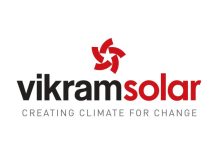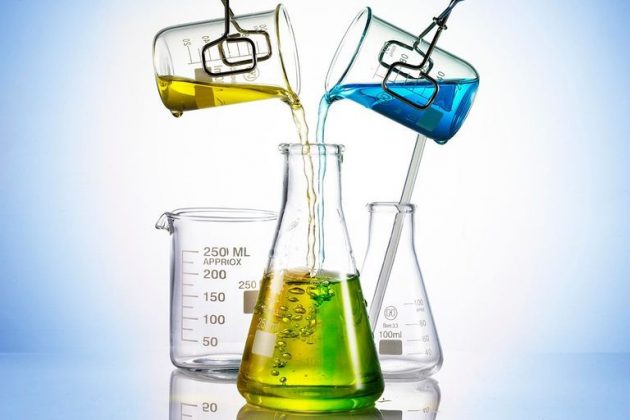Our columnist, Sahasranaman, looks at various metrics and indices to measure and rank sustainability. Though easy to understand qualitatively, sustainability is too complex to be quantified. But what cannot be quantified cannot be improved. A well-respected index will allow companies to be benchmarked with their peers on their sustainability performance.
Sustainability, as is commonly understood today, is a fairly recent addition to the English lexicon. It was first used in 1972, in the context of “our future”, in the book – Blueprint for Survival. In the US, the word was first used in 1974 to justify a “no growth” economy. “Sustainability” made its first appearance in a United Nations document in 1978. After 1978, the term started appearing regularly in both technical articles and policy documents. The Brundtland Report, published in 1987 by the United Nations World Commission on Environment and Development, coined the term “sustainable development” and defined it as “development that meets the needs of the present without compromising the ability of future generations to meet their own needs.”Sustainability has become fashionable to talk about these days and a cross-section of the society ranging from politicians to schoolchildren use the word, perhaps without giving it much thought.
Economic activity has to be efficient. It also has to be sustainable. While efficiency is easy to measure and benchmark, sustainability is far more complex to characterise. But unless we are able to quantify it, it will remain a meaningless term to be dropped regularly at conferences and conclaves. A metric for sustainability will help in development and incentivisation of sustainable practices through comparison and benchmarking.
GREENSCOPE
A clumsy acronym for “Gauging Reaction Effectiveness for the Environmental Sustainability of Chemistries with a multi-Objective Process Evaluator”, GREENSCOPE is a methodology for rating and evaluating the sustainability of a chemical process during its development stage. Sponsored by US EPA, the methodology has four pillars – Efficiency, Environment, Energy and Economics. Under these four heads, the tool uses 139 performance indicators to quantify the sustainability of a chemical process. GREENSCOPE allows quantitative comparison between processes that manufacture the same product using different raw materials, chemical reactions and separation processes and produce different by-products.
Under the Efficiency head, the methodology looks at the conversion and selectivity of reactions involved in the chemical process. Specifically, it addresses Atom Economy, which is a measure of how much mass from the raw materials end up in product. Energy is arguably the most important component of sustainability. GREENSCOPE compares the energy consumption of the process against the “Best” and “Worst” case scenarios and calculates a rating value as a percentage of the ratio (Actual – Worst) / (Best – Worst). Energy target can be set for a process using pinch technology.
On the Environment front, GREENSCOPE assesses the potential environmental impacts of emissions from the process under eight categories: human toxicity by ingestion and dermal/inhalation routes, aquatic toxicity, terrestrial toxicity, acidification, photochemical oxidation, global warming and ozone depletion. As in the case of energy, percent scores are calculated for each impact category. The criterial under Economics include costs and annualised profits.
GREENSCOPE builds the sustainability model of a chemical process during its development and optimisation stage. Such a model sets different targets that have to be realised to improve the sustainability of the process.
Chemie³
Chemie³, an initiative of the German Chemical Industry Association (VCI) in partnership with two other organisations, uses 40 indicators to measure sustainable development. It is the first of its kind in the chemical industry. Launched in 2013, the indicators cover economic, environmental and social criteria, ranging from the competitiveness of the chemical industry on global markets to greenhouse gas emissions and the percentage of young people who are offered permanent employment after an apprenticeship. As many as 17 out of the 40 indicators are dedicated to social criteria, emphasising this dimension in the sustainability debate. Following the launch of Chemie³, VCI and its partners have set the goal of anchoring sustainability as the guiding principle for German Chemical Industry. Twelve “Sustainability Guidelines for the Chemical Industry in Germany” provide a roadmap for this. With quantitative yardsticks like Chemie³, sustainability is no longer an abstract concept.
DJSI
Dow Jones Sustainability Index (DJSI) is a respected independent sustainability ranking system and benchmarks the sustainability performance of companies based on environmental, social and economic performance. Launched in 1999, DJSI is based on RobecoSAM’s Corporate Sustainability Assessment methodology. Each year over 3400 publicly traded companies are invited to participate in this assessment. The assessment examines financially material factors that impact a company’s value drivers, such as the ability to innovate, attract and retain talent and enhance its operational eco-efficiency. Within each industry, companies with a minimum total score of 60 and whose score is within 1% of the top performing company’s score receive the RobecoSAM Gold Class award. Within the top 15% of each industry, the company that has achieved the largest proportional improvement in its sustainability performance compared to the previous year is named the RobecoSAM Industry Mover. AkzoNobel is the current leader on the DJSI.
AIChE
Another index to benchmark sustainability against peers is the AIChE (American Institute of Chemical Engineers) Sustainability Index. Sustainability performance is evaluated using 7 key metrics – Strategic commitment, Sustainability innovation, Environmental performance, Safety performance, Product stewardship, Social responsibility and Value-Chain management. Launched in 2008, the index is benchmarked against that of 11 major chemical companies like BASF, AkzoNobel, Dow, DuPont etc.
CDP
Earlier known as Carbon Disclosure Project, CDP is a London based not-for-profit organisation that seeks to monitor the environmental performance of world’s principal publicly traded companies. This is done through annual surveys to collect information on Greenhouse Gas Emissions and Water Management. Over the last 16 years CDP has built up a very comprehensive database of self-reported environmental data in the world. CDP scores companies on their disclosures and puts out ratings in the public domain.
Epilogue
Sustainability can mean different things to different organisations depending on their stakeholders. Though sustainability is easy to understand qualitatively, it is a complex and elusive concept when it comes to quantification. What cannot be measured cannot be improved. A universally acceptable and respected system of metrics is required so that businesses can be benchmarked on the same platform for their sustainability performance. A metric for sustainability enables us to reward and advance it.
Readers’ responses may be sent to k.sahasranaman@gmail.com or chemindigest@gmail.com

































